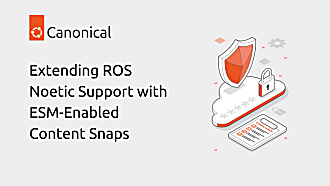Eduardo Aguilar Pelaez
on 25 December 2019
Our MAAS team has been hard at work, making life even better for those of you who provision and manage servers and data centres. This hard work has produced a new release, MAAS 2.7!
This blog describes how MAAS 2.7 can detect network faults before users run into them, and test network configurations before you apply them to deployed, live machines.
Use Cases:
1) Detecting Disconnected Cables
MAAS 2.7 will ensure that disconnected network interfaces are not automatically configured during commissioning: it informs you when a network interface on your machine is disconnected from an uplink and and skips configuration of that interface. Alternatively, if you want, the UI will let you configure disconnected interfaces or deploy machines with configured — but disconnected — interfaces. You can later update the interface connection status without recommissioning.
Overall, early detection of interface connection status helps you create network configurations that represent the real hardware status, helping you get the results you expect.
2) Detecting Slow Links
MAAS 2.7 also informs you if an interface is connected to a slower link than the interface can handle. This information is displayed, but will not prevent configuration or deployment of the machine.
Early detection of slow links helps you find accidental cabling errors: no more head-scratching when things run slow. You can now have your coffee break back! (You’re welcome.)
3) Allocating machines based on Link Speed
When using MAAS 2.7, you will be able to allocate machines based on their link speed, via the user interface as well as the MAAS API. This feature brings two benefits:
- You will be able to search for a machine that has the specific link speed you need. This will prove useful when selecting a machine that will have to do heavy networking tasks.
- You will be able to verify that a machine is connected to the appropriate uplink. MAAS 2.7 will show you;
- the interface speed (the top speed that the device can handle) and
- the link speed (the top speed that the connected switch can handle).
For example, this functionality lets you know if you have accidentally connected a new machine with a 10Gbps interface to an old switch that only supports 1Gbps, once again saving you time if something was mis-cabled.
4) Network Testing and Validation Scripts
As a more involved user, you will also be able to run your own network testing and validation script with MAAS 2.7.
For testing, you will be able to define your test script to take an ‘interface’ parameter from MAAS, along with user-configurable URLs from within MAAS.
For validation, your script will boot into the ephemeral environment with standard network settings. When the script runs, it will apply any custom network settings and validate network connectivity on all interfaces by;
- connecting to a host you specify, and
- contacting the gateway and rack controller.
In the case a bond is configured, the network validation script will test the bond, one link at a time, to ensure appropriate redundancy. If there are any faults, these will be visible in the UI and the API.
5) Internet Connectivity Script
Finally, you will be able to run the Internet Connectivity Scripts against multiple Interfaces. When run, the script will only try to access the Internet using the specified interface(s).
Summary
Overall, the 2.7 release of MAAS brings with it a suite of networking early-detection features. MAAS 2.7 ensures that necessary checks are done as soon as possible — and administrators are made aware of problems as soon as possible — increasing the predictability of results and providing some needed guard rails during server provisioning.



